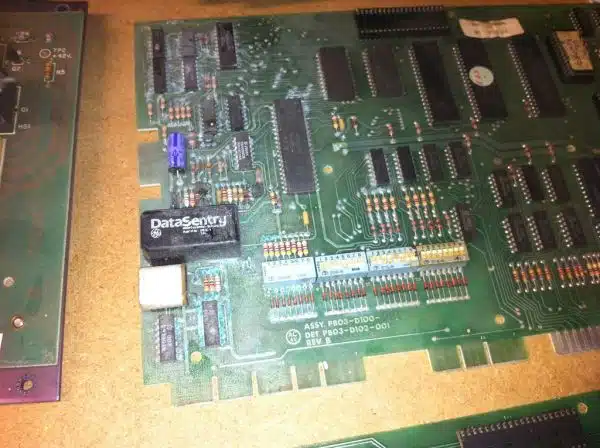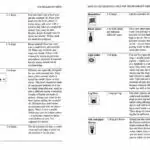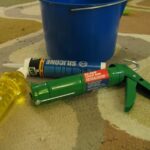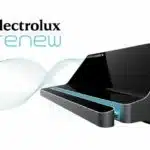Battery corrosion is a common problem, and if not addressed promptly, can cause significant damage to batteries and the devices they power. The buildup of white or greenish-blue crusty substance on battery terminals can reduce electrical conductivity, leading to poor performance or complete failure of the device. As a battery corrosion cleaning expert, I have encountered numerous cases where neglecting this problem has resulted in damaged devices and costly repairs.
In this article, I will share my insights on how to clean battery corrosion effectively. Whether you are dealing with corroded car batteries, portable electronic devices, or household appliances, this guide will provide you with practical tips and strategies to restore your batteries’ optimal performance. By following these steps, you can save money on costly repairs and replacement of damaged devices while also serving others by extending the life of their batteries.
Understanding Battery Corrosion
Like a disease that slowly eats away at the body, corrosion is a silent killer of batteries. It is the result of chemical reactions that occur between the metal terminals and the sulfuric acid in the battery. Corrosion looks like a white or greenish-blue substance that accumulates on the terminals and can cause poor conductivity, which results in reduced battery life and functionality.
Corrosion occurs due to several common causes, including exposure to extreme temperatures, overcharging, undercharging, or lack of maintenance. One way to prevent it is by regularly cleaning your battery terminals using appropriate cleaning solutions and tools. It is also essential to keep your battery clean and dry, especially during winter when salt from roads can cause corrosion.
To prevent corrosion, ensure that you do not overcharge or undercharge your battery for extended periods. Additionally, avoid leaving your car unused for long periods as this can lead to self-discharge that can cause sulfate buildup on the terminals. By following these prevention tips, you can keep your battery healthy for longer periods of time and reduce the risk of unexpected failures. In the subsequent section, we’ll discuss how to identify corrosion on battery terminals to help you determine whether it’s time to clean them up.
Identifying Corrosion On Battery Terminals
Understanding battery corrosion is essential in ensuring the longevity of your battery. Corrosion occurs when there is a reaction between the battery terminals and the surrounding environment, such as humidity or acid leakage. The most common cause of corrosion is the accumulation of electrolyte deposits on the battery terminals, which can lead to poor conductivity and eventually prevent the battery from functioning.
To prevent battery corrosion, it is crucial to keep your battery clean and dry. Ensure that your battery is securely fastened in place and not jostled around during driving, as this can also cause damage to the terminals. Furthermore, regularly inspecting your battery for signs of damage or wear can help you identify issues before they become more severe.
Cleaning battery corrosion requires specific tools and materials to ensure that it is done safely and effectively. You will need protective gloves, safety glasses, a wire brush or sandpaper, baking soda solution, and water for cleaning. Before beginning any cleaning process, disconnect the negative cable first before removing the positive cable from the terminal post. Then use a wire brush or sandpaper to remove any visible corrosion on both posts before applying a baking soda solution to neutralize any remaining acid buildup.
Identifying corrosion on your batteries may be challenging; however, with regular inspection and maintenance practices coupled with cleaning procedures discussed above should help prevent further deterioration of your batteries. In our next section about ‘tools and materials needed for cleaning,’ we will go into detail about what you need and how to use them effectively in cleaning your corroded batteries.
Tools And Materials Needed For Cleaning
As the old adage goes, “An ounce of prevention is worth a pound of cure.” This is especially true when it comes to cleaning battery corrosion. Before you even begin the cleaning process, it’s crucial to make sure you have the right tools and materials at your disposal. Not only will this save you time and hassle in the long run, but it can also help prevent any potential accidents or injuries.
One of the most important items you’ll need for cleaning battery corrosion is protective gloves. Battery acid can be extremely corrosive and cause severe burns if it comes into contact with your skin. Therefore, wearing protective gloves is an absolute must when handling batteries. Additionally, eye protection is highly recommended to prevent any splashes or drips from getting into your eyes.
When selecting gloves and eye protection for battery cleaning, make sure to choose products that are specifically designed for this purpose. Ordinary household gloves may not be strong enough to withstand battery acid, while regular safety glasses may not provide adequate coverage for your eyes. It’s essential to take these precautions seriously to ensure your safety and well-being throughout the cleaning process.
Moving forward, let’s discuss some additional safety precautions to take when cleaning battery corrosion.
Safety Precautions To Take
Preventing accidents while cleaning battery corrosion is essential. The process involves the use of corrosive chemicals, which can be hazardous if not handled carefully. People who are not familiar with the process should avoid attempting it and seek professional assistance instead. However, if you must clean battery corrosion yourself, follow all instructions carefully and take the necessary precautions to prevent accidents.
One of the most important safety precautions to take when cleaning battery corrosion is wearing protective gear. This includes rubber gloves and goggles to protect your hands and eyes from coming into contact with corrosive chemicals. Additionally, it’s important to work in a well-ventilated area to prevent inhaling toxic fumes that may arise during the cleaning process.
Overall, safety should always be your top priority when handling battery corrosion. By following proper procedures and taking necessary precautions such as wearing protective gear, you can minimize the risk of accidents occurring during the cleaning process. In the next section, we will discuss how to safely remove a battery from a device before proceeding with cleaning.
Removing The Battery From The Device
- To locate the battery, it is important to refer to the owner’s manual for the device, as the exact location of the battery will vary depending on the model.
- Once the battery is located, it is necessary to disconnect the battery from the device, taking care to not damage any of the surrounding components.
- If the battery is secured with screws, it is important to use the correct screwdriver to avoid damaging the screws.
- Once the screws have been removed, the battery can be lifted out carefully, ensuring that any remaining corrosion is not disturbed.
- The battery should then be placed in a safe container to avoid any contact with other objects which may cause a short circuit.
- Finally, the area around the battery should be cleaned with a solution of baking soda and water to remove any remaining corrosion.
Locating The Battery
The first step in removing the battery from a device is to locate it. To do this, one must have the proper tools and adequate lighting. The most common tools used are a Phillips head screwdriver and a pair of pliers. These tools are necessary for removing the screws that hold the battery compartment cover in place and for safely extracting the battery from its housing.
Proper lighting is also crucial when locating the battery. Inadequate lighting can make it difficult to see where the screws are located and can lead to mistakes or damage to the device. A bright work light or flashlight can be used to illuminate the area around the battery compartment, making it easier to locate and remove.
It is important to note that different devices may have batteries located in different areas, so it is essential to consult the device’s manual or seek professional guidance if unsure. With proper tools and lighting, locating the battery should be a straightforward process that sets one on their way towards removing any corrosion buildup safely.
Disconnecting The Battery
As a battery corrosion cleaning expert, it is crucial to understand the importance of disconnecting the battery before removing it from the device. Failure to do so can result in electrical shocks, damage to the device, or injury to oneself. Therefore, before proceeding with removing the battery, one must follow proper safety precautions and disconnect it from its power source.
Once the battery has been safely disconnected, it is essential to remember how it was connected in the first place. Taking a picture or labeling the wires can help ensure that it is reconnected properly later on. Improper reconnection can lead to damage or even shorten the life of the battery. Therefore, taking note of how everything was connected will help prevent any potential issues down the line.
It is also worth noting that improper disconnection of batteries can have an impact on their lifespan and performance. When a battery is not disconnected correctly, it can cause short circuits or drain energy from other components in the device. This can result in reduced power output and overall performance for both the battery and device as a whole. Properly disconnecting and reconnecting batteries ensures that they function optimally and provides longevity for both device and battery alike.
Unscrewing The Battery
Moving forward with the process of removing the battery from a device, it is essential to understand the proper steps in unscrewing it. However, before proceeding with the unscrewing process, one must ensure that they are working with the correct type of battery. There are various types of batteries available in the market, each requiring a specific method in removing them from their device.
Battery corrosion is one common cause of difficulty in unscrewing batteries. The accumulation of corrosion on battery terminals can make it challenging to loosen the screws holding them in place. Therefore, it is crucial to clean any corrosion before attempting to remove the battery. Failure to do so may result in damaging the device or causing injury.
Once all safety precautions have been taken, and any necessary cleaning has been done, it is time to begin unscrewing the battery from its device. Carefully use a screwdriver or other appropriate tool to loosen and remove all screws holding the battery in place. Take note of which screw goes where and keep them organized for easy reassembly later on. Properly unscrewing and removing batteries helps prevent damage to devices and ensures optimal performance for both device and battery alike.
Disposing Of Corroded Batteries
Despite the best efforts to maintain batteries, corrosion is almost inevitable. Battery corrosion can be a daunting task for many, as it can lead to significant damage or even the failure of electronic devices. However, do not worry; cleaning battery corrosion is relatively simple and straightforward.
Before we delve into how to clean battery corrosion, it is essential to understand the disposing regulations and environmental impact of batteries. Corroded batteries must never be thrown in the trash or recycled with regular household waste. Doing so could cause harm to individuals who handle garbage or damage the environment through toxic exposure. Instead, dispose of corroded batteries at designated electronic recycling centers.
Cleaning battery corrosion requires specific tools such as gloves, goggles, and a mask that covers your nose and mouth from inhaling hazardous materials. The following are some tips on how to clean battery corrosion using baking soda and water:
- Mix baking soda with water until you get a thick paste.
- Apply the paste onto the corroded areas of the battery terminals.
- Use a toothbrush dipped in water to gently scrub away any remaining residue.
By following these simple steps, you can save time and money by cleaning battery corrosion safely at home without causing further damage or risking harm to yourself or others. In our next section, we will discuss different methods for cleaning battery corrosion with other household products.
Cleaning With Baking Soda And Water
Baking soda is a common household item that can be used to clean battery corrosion due to its mild abrasive properties. To start, you will need to mix a small amount of baking soda with water until it forms a paste. This paste should then be applied onto the corroded areas of the battery using an old toothbrush or cloth.
The effectiveness of baking soda and water compared to other cleaning methods has been widely discussed. While some argue that vinegar, lemon juice, or cola can remove battery corrosion just as effectively, there is no conclusive evidence to support these claims. Baking soda remains the most commonly used method due to its availability and perceived effectiveness.
For those who might not have access to baking soda, there are alternatives available. These include commercial battery cleaners or rubbing alcohol mixed with salt. However, caution must be exercised when using these alternatives as they may contain harsher chemicals that could damage the battery if not used properly. It is advisable to do thorough research before trying out any alternative methods for removing battery corrosion.
Moving forward into cleaning with vinegar and water, this method is also popular in removing battery corrosion due to its acidic properties.
Cleaning With Vinegar And Water
As a battery corrosion cleaning expert, I highly recommend using vinegar and water to clean corroded batteries. Vinegar is an excellent cleaning agent that has been used for centuries due to its acidic properties. It breaks down the corrosion on the battery terminals, making it easy to remove. In addition, vinegar is readily available and affordable, making it a cost-effective solution for cleaning battery corrosion.
To mix vinegar and water for cleaning, you will need a bowl or container large enough to submerge the corroded battery terminals. First, pour equal parts of white vinegar and water into the bowl or container. Next, carefully remove the batteries from their compartment and dip the corroded terminals into the mixture for about 5-10 minutes. After soaking, use a toothbrush or any soft-bristled brush to gently scrub off any remaining corrosion. Finally, rinse with plain water and dry thoroughly before reinserting them into the device.
While vinegar is an excellent option for cleaning battery corrosion, there are alternatives you can use if you do not have access to it. One such alternative is baking soda mixed with water. This mixture helps neutralize any acid present on the metal surface of the batteries by creating a chemical reaction that dissolves any corrosion. However, be careful not to get this mixture inside your device as it can damage its internal components.
Next up is cleaning with commercial cleaners without using harmful chemicals that may further damage your device’s internal components.
Cleaning With Commercial Cleaners
There are several types of commercial cleaners that can be used to clean battery corrosion. One type is a baking soda solution, which is made by mixing baking soda with water to form a paste. This solution is effective in neutralizing acid and removing corrosion, but it must be rinsed off thoroughly to prevent damage to the battery. Another type of commercial cleaner is a specialized battery cleaner, which is formulated specifically for cleaning batteries. These cleaners are generally more expensive than other types of cleaners but are often more effective.
When using commercial cleaners, it is important to weigh the pros and cons. The main advantage of using commercial cleaners is that they are often more effective than household remedies such as vinegar or baking soda. They can also save time and effort in cleaning a heavily corroded battery. However, commercial cleaners can be costly and may contain harsh chemicals that can damage the battery if not used properly.
Overall, using commercial cleaners can be an effective way to clean battery corrosion, but it is important to choose the right type of cleaner and use it carefully. It may also be necessary to wear protective gloves and goggles when using certain types of cleaners. In the next section, we will discuss another method for cleaning battery corrosion: using a wire brush to scrub terminals.
Using A Wire Brush To Scrub Terminals
Scrubbing the terminals with a wire brush is an effective way of removing battery corrosion. It is a quick and easy method that most people can do on their own. When using a wire brush, it is important to use protective gloves to prevent any harm from the corrosive substances found on the battery.
There are alternatives to using a wire brush when cleaning battery corrosion. One option is to use baking soda and water solution. This mixture will neutralize the acid and remove any corrosion without causing damage to sensitive terminals. Another alternative is using a specialized cleaning spray that can dissolve stubborn deposits on the battery.
When scrubbing the terminals with a wire brush, it is crucial to take precautions for sensitive terminals. A gentle touch should be applied when handling these terminals as they can be easily damaged. Additionally, avoid using too much force or applying too much pressure as this may result in permanent damage to the battery.
To ensure longevity of your battery, applying petroleum jelly to terminals after cleaning them with a wire brush will help protect them from future corrosion. This simple step will create a protective barrier around the terminal that prevents further oxidation from occurring.
Applying Petroleum Jelly To Terminals
Petroleum jelly, also known as Vaseline, is a commonly used substance for cleaning battery corrosion. It has numerous benefits that make it an ideal choice for cleaning battery terminals. One of the main benefits of petroleum jelly is that it acts as a barrier against future corrosion by preventing moisture and air from coming into contact with the metal surface. Additionally, it has high water resistance and can withstand extreme temperatures, making it ideal for use in harsh environments.
Alternatives to petroleum jelly for cleaning battery corrosion include baking soda and water solution, vinegar and water solution, or specialized commercial cleaning products. However, these alternatives may not offer the same level of protection against future corrosion as petroleum jelly does. Moreover, some of these alternatives may be corrosive themselves and could damage the battery terminals if not used correctly.
When applying petroleum jelly to the battery terminals, make sure to use gloves to protect your hands from coming into contact with the acid present in the battery. Apply a small amount of petroleum jelly to each terminal using a clean cloth or brush. Be careful not to overapply as excess petroleum jelly can cause electrical problems by creating a barrier between the terminal and cable connector.
With proper application of petroleum jelly to your battery terminals, you can prevent future corrosion and extend the life of your batteries. However, it’s essential to test your battery for optimal performance regularly. Testing helps ensure that your batteries are functioning correctly and will prevent any potential issues before they occur. In our next section, we’ll discuss how you can test your battery effectively for optimal performance without damaging it in any way.
Testing The Battery For Optimal Performance
Battery testing is an important practice to maintain optimal performance and should include a thorough inspection of cell condition, measuring of internal resistance, and checking of battery voltage. To inspect cell condition, it is important to remove any dirt and debris from the cells and to look for any signs of corrosion on the terminals. Internal resistance of the battery can be tested using an ohmmeter, which will provide an accurate reading of the resistance between the terminals. Finally, battery voltage should be checked to ensure it is at the correct level to achieve optimal performance. Cleaning any corrosion from the terminals is essential to ensure proper connections and prevent further damage.
Checking Battery Voltage
When it comes to testing a battery for optimal performance, one crucial step is measuring its voltage. This is important because it gives an indication of the amount of electrical energy that the battery can provide. To measure voltage accurately, ensure that the battery has been disconnected from any devices and allowed to rest for at least 30 minutes. Then, use a voltmeter to test the battery’s voltage by connecting the positive and negative probes to their respective terminals.
Aside from measuring voltage, another important factor to consider when testing a battery is its acidity level. Over time, batteries can become corroded due to exposure to moisture and other environmental factors. If you notice white or green deposits on your battery terminals, this could be a sign of corrosion. To test acidity levels in your battery, use a pH tester or litmus paper strips. A reading of 7 indicates neutral acidity, while anything below 7 is acidic and above 7 is alkaline.
In conclusion, testing the voltage and acidity levels of your battery are key steps in ensuring optimal performance and prolonging its lifespan. By measuring voltage accurately and monitoring acidity levels regularly, you can identify potential issues before they become major problems. As a battery corrosion cleaning expert, I recommend performing these tests periodically as part of your routine maintenance plan to keep your batteries in top shape.
Measuring Internal Resistance
As a battery corrosion cleaning expert, I have seen firsthand the importance of testing a battery for optimal performance. Apart from measuring voltage and acidity levels, another crucial factor to consider is the battery’s internal resistance. Internal resistance refers to the amount of opposition that the battery provides against the flow of electrical current. Measuring techniques such as load testing or impedance spectroscopy can help determine a battery’s internal resistance, which can aid in interpreting results and identifying issues.
Load testing is one method used to measure internal resistance by applying a specific load to the battery and measuring its voltage drop. This technique can help identify any defects within the battery, such as high resistance cells or poor connections between cells. Another measuring technique is impedance spectroscopy, which uses an AC signal to measure the impedance of each cell in a battery pack. This method can provide more detailed information on individual cell performance and can detect early signs of degradation.
Interpreting results from these measuring techniques requires expertise and knowledge, but it can provide valuable insights into a battery’s health and performance. By monitoring internal resistance regularly, potential issues can be identified before they become major problems. As with measuring voltage and acidity levels, incorporating internal resistance measurements into routine maintenance plans can prolong a battery’s lifespan and ensure optimal performance for longer periods.
Inspecting Cell Condition
As a battery corrosion cleaning expert, I know that testing a battery is crucial for maintaining its optimal performance. Apart from measuring voltage and acidity levels and internal resistance, inspecting the health of each cell in a battery is equally important. Inspecting battery health can identify any visible defects or abnormalities within the cells, such as bulging or leaking, which can indicate potential issues.
Understanding battery maintenance involves regular inspections of each cell to ensure that they are functioning correctly. Any signs of damage or degradation can be addressed promptly to prevent further damage to the battery and prolong its lifespan. Proper maintenance also involves keeping the cells clean and free from any debris or corrosion buildup that can impede their performance.
Inspecting cell condition should be incorporated into routine maintenance plans to ensure that the battery is functioning optimally. By doing so, potential issues can be identified early on, allowing for prompt repairs and preventing further damage. Maintaining a healthy battery will not only save time and money but also ensure that the device powered by it will operate efficiently for an extended period.
Preventing Future Battery Corrosion
Having tested the battery for optimal performance, it is important to take measures to prevent future battery corrosion. Prevention is always better than cure; therefore, it is essential to follow certain techniques that will help keep your battery in good condition.
Preventing battery damage involves regular cleaning of the terminals using a mixture of baking soda and water. This solution neutralizes the acid buildup on the terminals and prevents further corrosion. After cleaning, apply petroleum jelly or dielectric grease on the terminals to protect them from moisture and air exposure. This step helps to keep the terminals clean and free from corrosive elements.
Corrosion prevention techniques also involve proper storage of batteries when not in use. Storing batteries in a cool, dry place can prolong their lifespan and prevent corrosion. It is also important to ensure that the batteries are charged before storage since low charge levels can lead to sulfation – a common cause of battery failure. By following these simple steps, you can prevent future battery issues and save yourself time and money in the long run.
Moving forward into troubleshooting common battery issues, it is crucial to understand how different problems may arise due to various reasons such as overcharging or undercharging, loose connections, or damaged components within the battery itself.
Troubleshooting Common Battery Issues
Detecting battery corrosion can be done by visually inspecting the battery terminals for any visible signs of corrosion. Removing battery corrosion should be done with caution, as it requires the use of specific tools and chemicals to ensure it is done safely. To begin cleaning battery corrosion, use a wire brush to scrub off the corrosion and then use a battery terminal cleaning solution to further clean the battery terminals. Finally, rinse the terminals with water to remove any excess solution and debris, and make sure the battery is completely dry before putting the cables back on.
Detecting Battery Corrosion
When it comes to maintaining your batteries, detecting battery corrosion is one of the most essential steps. Battery corrosion is caused by a chemical reaction between the battery acid and the metal contacts in the battery compartment. This reaction results in the formation of a white or greenish-blue powdery substance on the battery terminals, which can damage your equipment if left untreated.
Ignoring battery corrosion can have several negative effects. For starters, it can decrease the lifespan of your batteries, causing them to die prematurely. Additionally, it can cause poor performance and even damage to your electronic devices. In some cases, ignoring battery corrosion can even lead to leakage and other hazardous situations.
To detect battery corrosion, start by inspecting your batteries regularly for any signs of discoloration or buildup on the terminals. You can also use a multimeter or voltmeter to check for voltage drops or irregularities in power output. If you notice any signs of corrosion, it is important to clean it immediately using an appropriate cleaning solution and protective gear. By taking these steps, you can ensure that your batteries stay in top condition and continue to provide reliable power for all of your electronic needs.
Removing Battery Corrosion
Preventing corrosion is important in maintaining the reliability and longevity of batteries. Corrosion can lead to malfunctions, damage, and even safety hazards. Therefore, it is essential to know how to remove battery corrosion effectively.
There are various techniques for removing battery corrosion. One method involves using baking soda and water solution with a toothbrush or cloth to scrub off the buildup on the terminals. Another technique is to use specialized cleaning products that dissolve the corrosion without damaging the battery or its components. It is important to wear protective gear such as gloves and goggles while cleaning the batteries.
Aside from removing corrosion, there are also prevention techniques that can be used to avoid future buildup. Applying petroleum jelly or silicone grease on battery terminals can create a barrier that prevents contact between air and metal, which causes corrosion. Additionally, storing batteries in a dry place away from extreme temperatures can help prevent moisture buildup that accelerates corrosion. By regularly cleaning and implementing preventive measures, you can ensure that your batteries remain in optimal condition for their intended purpose.
Seeking Professional Help For Complex Cases
Professional assistance may be required for complex cases of battery corrosion cleaning. While minor cases can be handled by following simple steps and using basic tools, more severe cases can cause damage to the battery and its components if not handled properly. In such situations, it is best to seek the help of a professional who has experience in dealing with complex cases.
Battery corrosion can occur due to various reasons such as exposure to moisture, high temperatures, or aging. The severity of the corrosion depends on these factors and the duration of exposure. If the battery has been corroded for an extended period, it may require professional assistance to avoid further damage. A skilled technician will have access to specialized equipment and knowledge that can help clean the battery without causing any harm.
In addition to avoiding further damage, seeking professional assistance for complex cases of battery corrosion cleaning can also save time and money in the long run. Attempting to fix a severely corroded battery without proper training or equipment can lead to costly mistakes that may require replacement of the entire battery system. Therefore, it is essential to trust an experienced expert who can handle such situations with care and precision.
Conclusion
Battery corrosion is a common issue that can hinder the performance of your device. It is essential to understand the nature of battery corrosion and take necessary precautions while cleaning it. By identifying corrosion on battery terminals, you can use the appropriate tools and materials for cleaning. Safety measures must be taken while removing the battery from the device to avoid any accidents.
To ensure optimal performance of your battery, testing is crucial after cleaning. Preventing future battery corrosion involves proper storage and maintenance techniques. In case of any troubleshooting or complex issues, seeking professional help is recommended.
Overall, cleaning battery corrosion requires attention to detail and adherence to safety protocols. With a thorough understanding of this process, you can keep your devices running smoothly and extend their lifespan. Remember to take preventive measures and seek expert help when needed for optimal results.
Image Credits
- “Battery corrosion of death” by Pierre J. (featured)





























